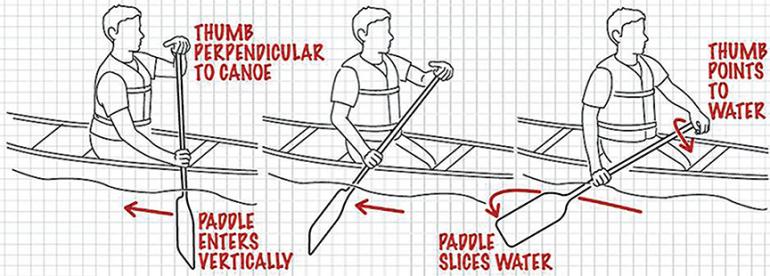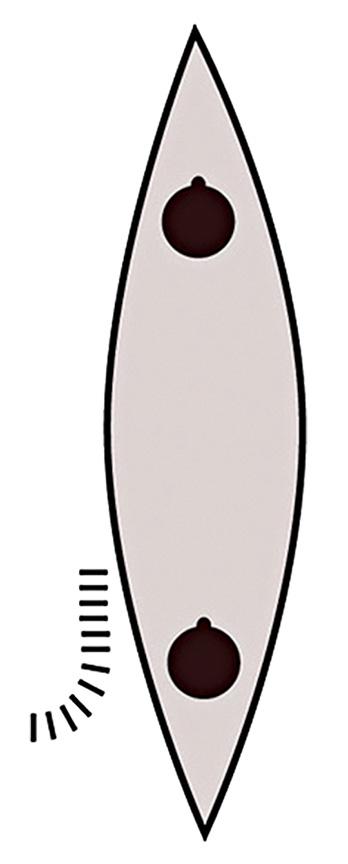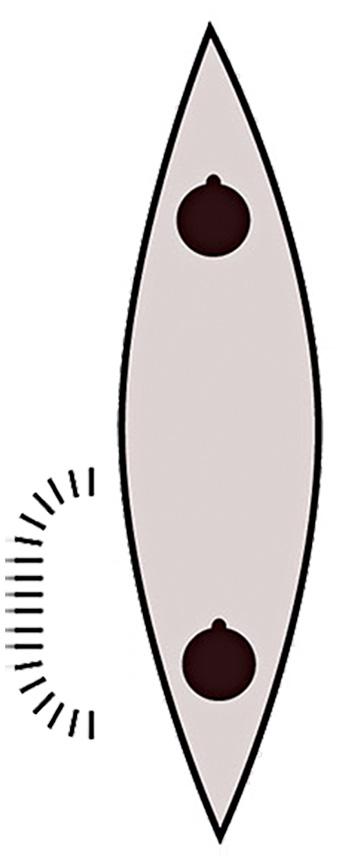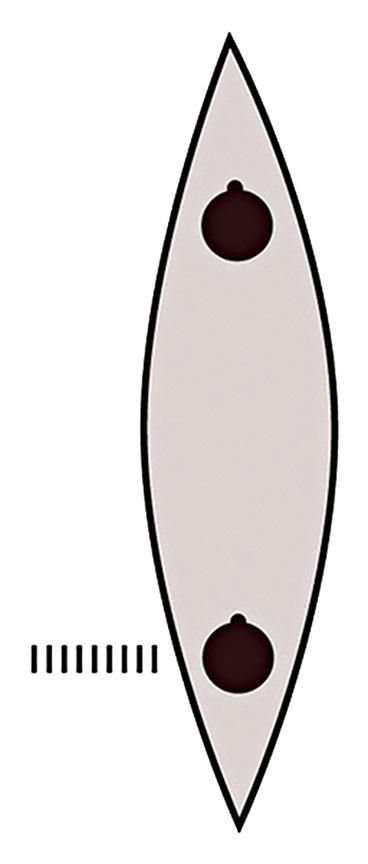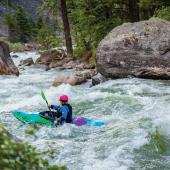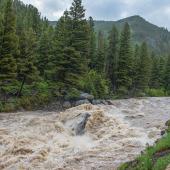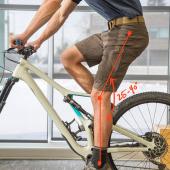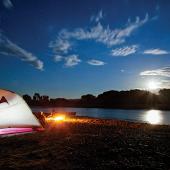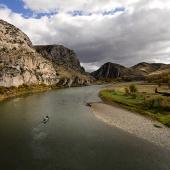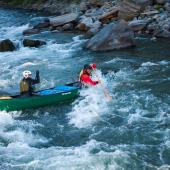Strokin' a J
Canoe-paddling basics.
The first thing that any boater learns on the water is to always be prepared for a swim. Whether you’re a pro or getting in a canoe for the first time, the water in Montana will likely be cold, so it’s always good to refresh your basic skills. Anybody stepping in and out of a canoe becomes at least a little familiar with the fundamentals: balance, body position, and for tandem boaters, coordination. But many of us float down the river not paying much attention to our paddlestrokes. A few practiced strokes use less energy and can make maneuvers in choppy water less fraught—and foster more harmony for boating couples.
Paddle techniques to know are bracing strokes, turning or corrective strokes, and power strokes. Often, keeping the canoe in a straight line can be a challenge. The most common correction stroke used by a solo paddler, or the stern paddler in tandem, while maintaining forward momentum, is the J-stroke. Paddling on one side, the onside, causes the canoe to pivot and push the bow to the offside or away from the paddle side. Beginner paddlers tend to keep changing their paddle from side to side to correct course—often derided in Montana as the “Minnesota Switch”—which is awkward, inefficient, and tiring, and can affect stability. Other common turning strokes include the sweep stroke, which turns the canoe to the offside, and the draw stroke, which turns the canoe to the onside.
J-Stroke
1. Near the end of the power stroke, turn the powerface out away from the boat to pry, or push, the stern of the canoe in the opposite direction to the paddle side—to the offside. This effectively pulls the bow back in the direction of the onside.
2. The powerface of the paddle is the face of the paddle that pulls the boat forward. As you turn the paddle to pry away, the paddle traces the course of a “J.”
3. Steer the paddle with your upper grip and allow the shaft to rotate in your other hand. Your thumb on your upper grip should end the stroke pointing down.
Sweep
Rather than pulling the paddle straight back in a power stroke, at the start of the stroke, turn the powerface of the paddle out from the canoe and scribe a wide arc or a “C” facing the canoe. This creates a wide offside turn.
Draw
The simple draw pulls the canoe to the onside. The powerface of the paddle is placed at right angles to the paddler and drawn in toward the boat. Variations on the draw are used when getting out into the current, or when eddying out, and have the capacity to turn the canoe quickly—but weight distribution (leaning downstream) is critical to avoid a swim.


